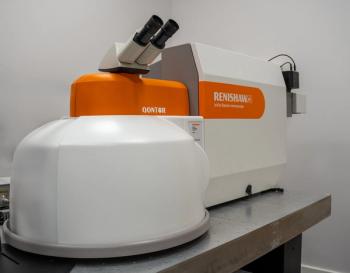
Indiana University School of Informatics and Computing Awarded $1M Grant from NIH
The National Institutes of Health (NIH) has awarded $1.18 million to faculty at the Indiana University School of Informatics and Computing at Indiana University–Purdue University Indianapolis and the IU School of Medicina (Indianapolis, Indiana) for a research collaboration that unites two cutting-edge technologies in the discovery and analysis of proteoforms.
The National Institutes of Health (NIH) has awarded $1.18 million to faculty at the Indiana University School of Informatics and Computing at Indiana University–Purdue University Indianapolis and the IU School of Medicina (Indianapolis, Indiana) for a research collaboration that unites two cutting-edge technologies in the discovery and analysis of proteoforms.
The principal investigators on the project are Xiaowen Liu from the Department of BioHealth Informatics at the School of Informatics and Computing, and Yunlong Liu from the Department of Medical and Molecular Genetics at the School of Medicine. The project combines their respective expertise in mass spectrometry-based top-down proteomics data analysis and ribonucleic acid (RNA) sequencing.
The research team for the project titled “Computational tools from top-down mass spectrometry-based proteoform identification and proteogenomics” also includes Harikrishna Nakshatri from the School of Medicine and Si Wu from the University of Oklahoma (Norman, Oklahoma).
The technologies, in tandem, represent a leap in discovering and analyzing proteins that can be seen “top-down,” or intact, through mass spectrometry-a bird’s eye-view that offers a new world in understanding the number and classification of proteins, as well as a challenge in grasping their breadth and complexity.
The limitations of previous techniques meant breaking the proteins into pieces, and the data models used to analyze them did not translate to the comprehensive top-down view. Xiaowen Liu is one of the few researchers creating algorithms that accommodate the intricacy of top-down mass spectrometry data.
His novel data model, the “mass graph,” will incorporate Yunlong Liu’s expertise in RNA sequencing modeling to further aid in accurate identification at the proteome level. RNA sequences provide information that enables more precision in creating a data template for targeting proteins. The team will also develop a software pipeline that uses these technologies.
When asked how many proteins might be discovered, Yunlong Liu said there may be hundreds of thousands. “The proteins are more than just a sequence of amino acids,” he said. “Some amino acids can be modified, and this technology will allow us to see those modification patterns as well.”
Xiaowen Liu said that getting a better picture would enhance our understanding of living organisms and present the opportunity for advances in diagnosing patients. “Comparing the protein forms for healthy samples and patient samples could reveal biomarkers that will improve medical prognoses,” he explained.
Indicating the promising translational benefits for treatments, Yunlong Liu said “We need to understand the form of the protein before we design a drug to target it. And so there is great therapeutic potential.”
Newsletter
Get essential updates on the latest spectroscopy technologies, regulatory standards, and best practices—subscribe today to Spectroscopy.



